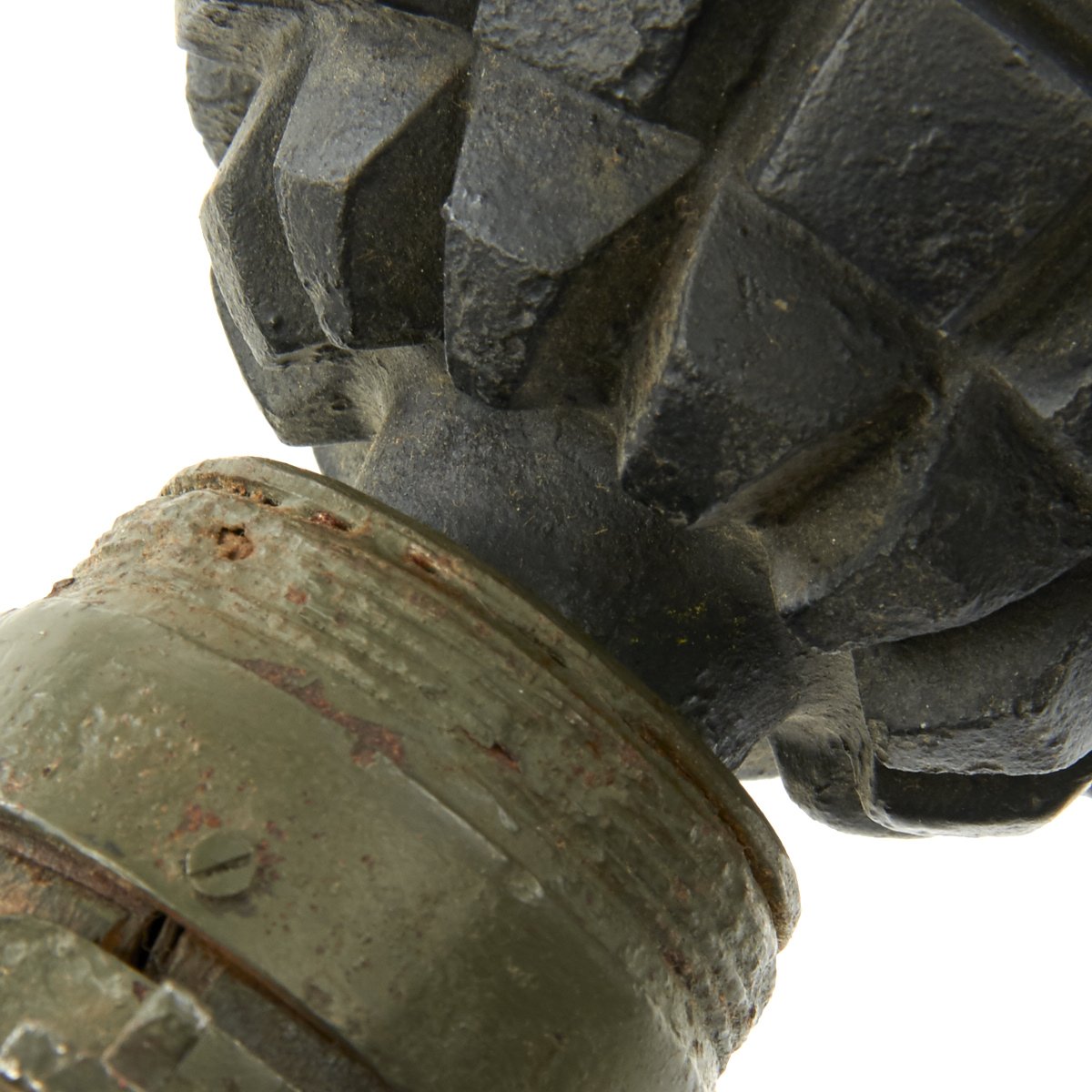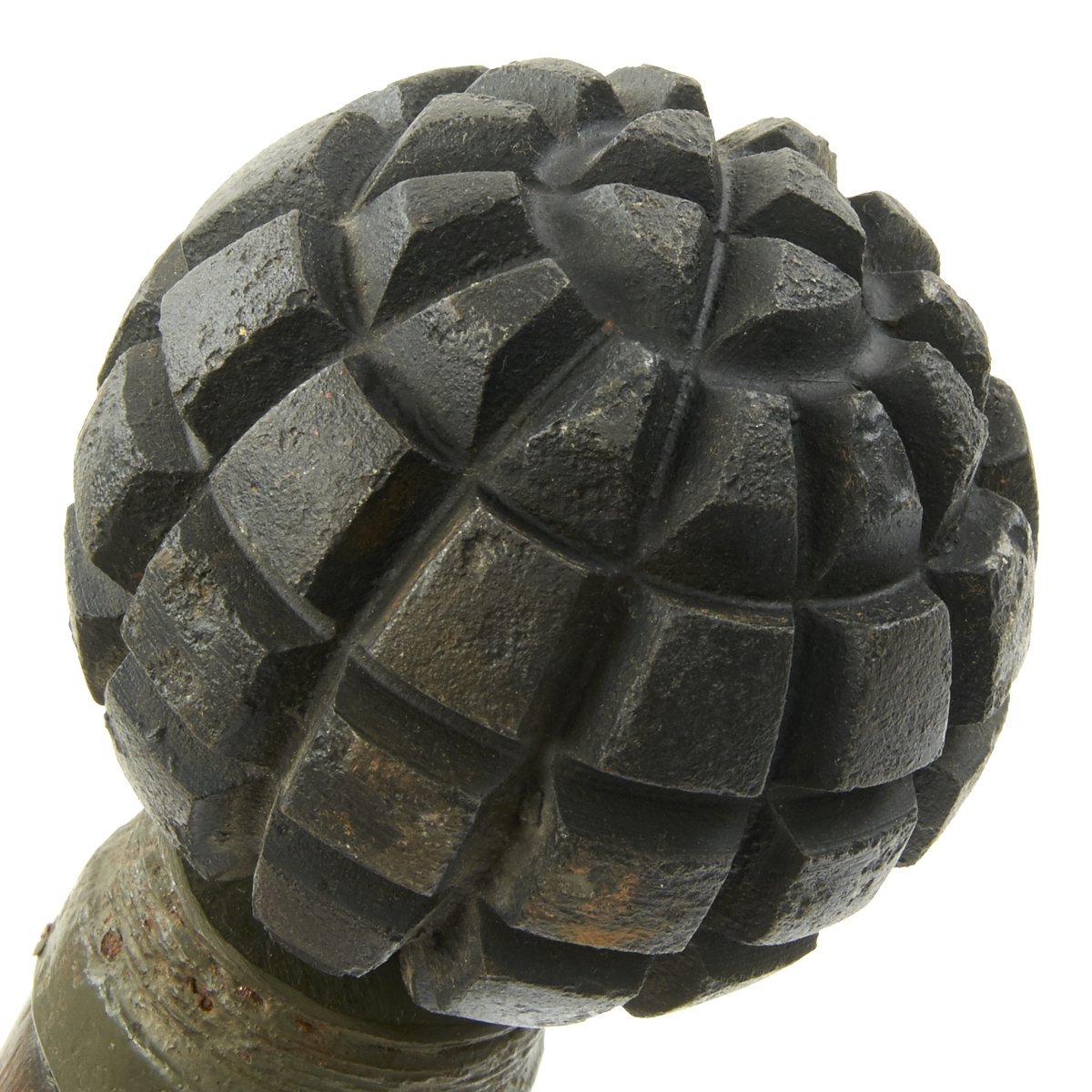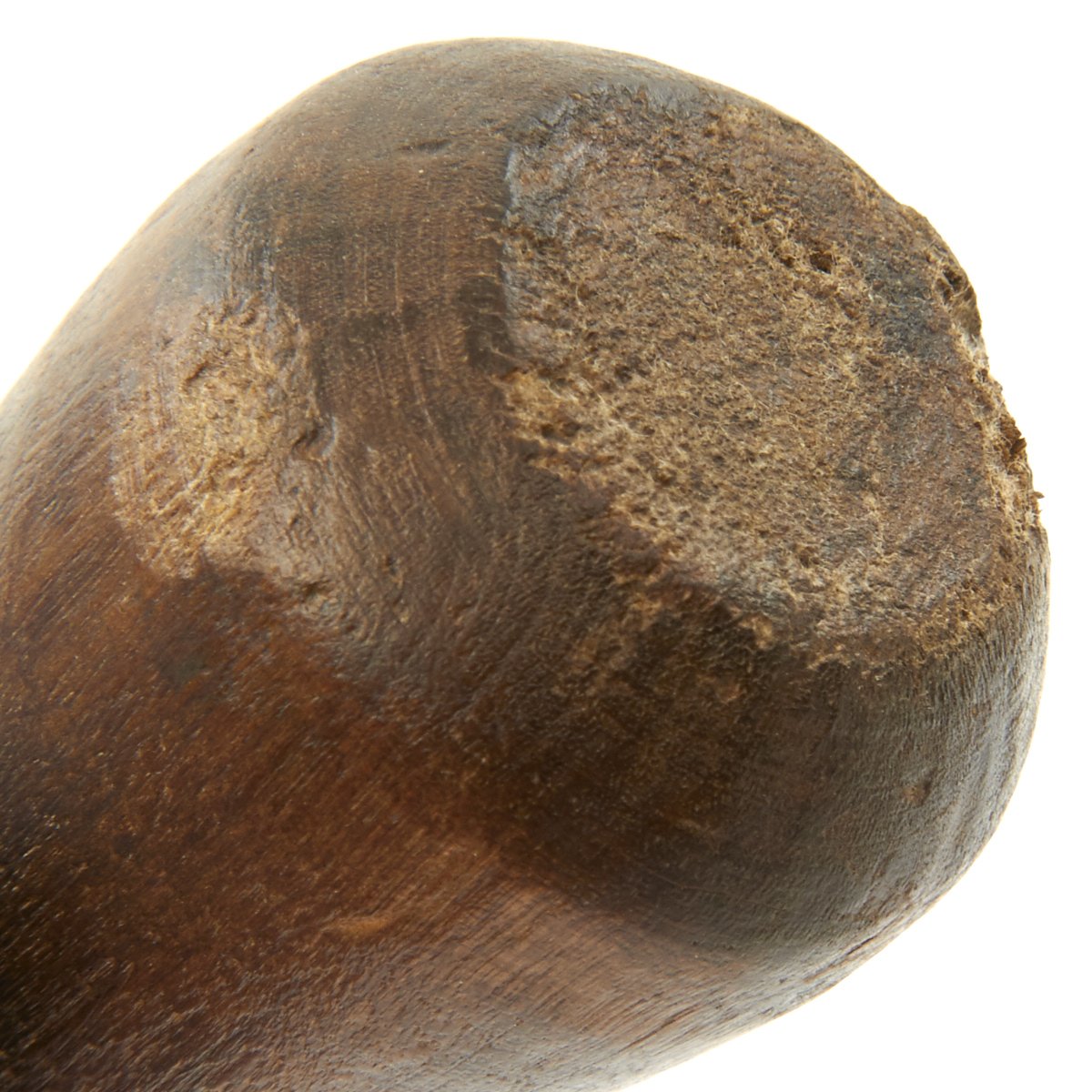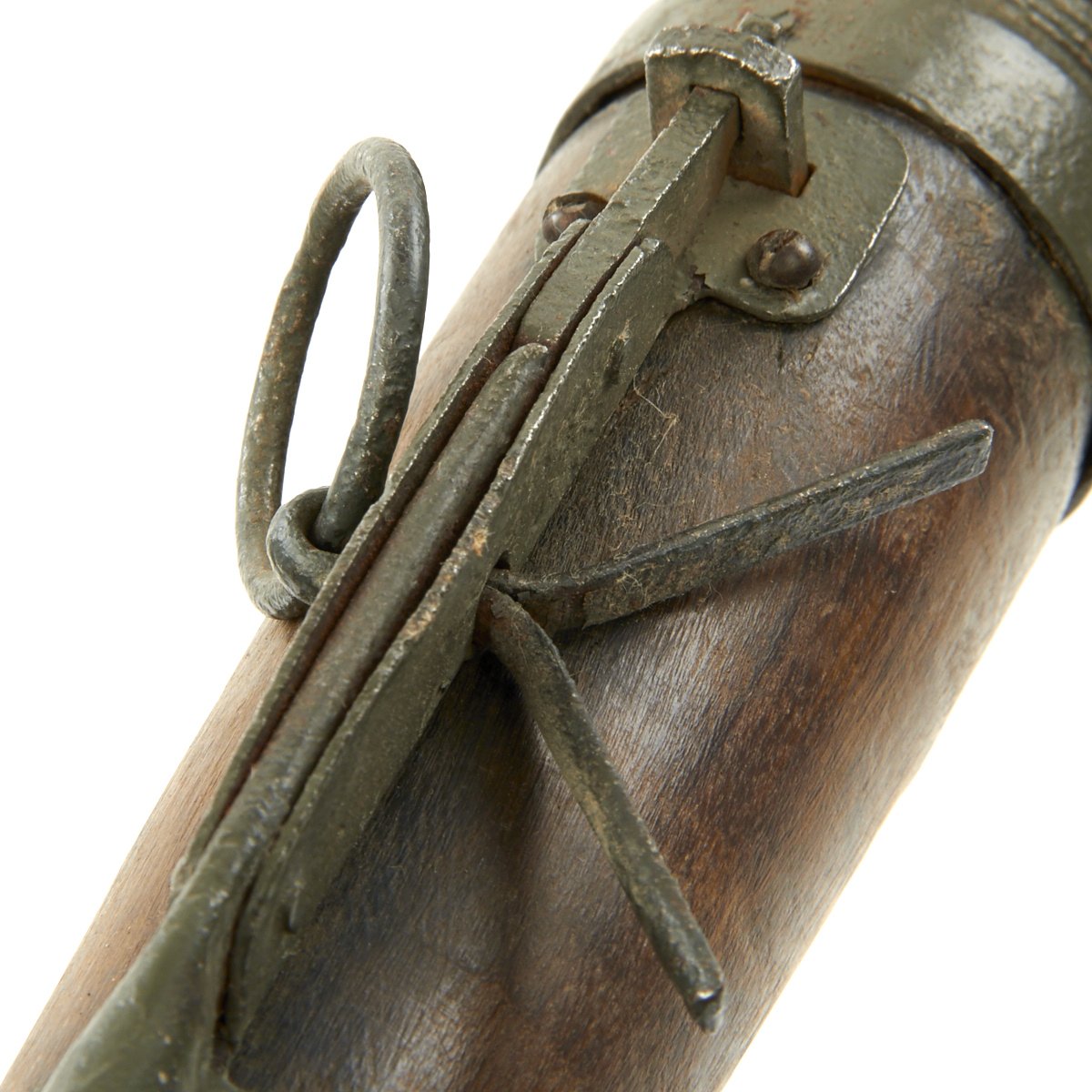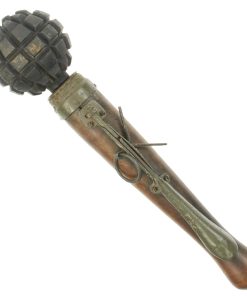Original German WWI M1913/15 Poppenberg Inert Ball Stick Hand Fragmentation Grenade – Rare Original Items
$ 1.295,00 $ 323,75
Original Item: Only One Available. Germany entered World War I with a single grenade design: a heavy 750-gram (26 oz) ball-shaped fragmentation grenade for use only by pioneers in attacking fortifications. This was known as the Kugelhandgranate (“ball hand grenade”) also known as Khg Mod. 1913, the first German hand fragmentation grenade. However it was too heavy for regular use on the battlefield by untrained troops and not suitable for mass production. This left Germany without a standard-issue grenade and improvised designs similar to those of the British were used until a proper grenade could be supplied.
This occurred in 1915, with the development of the M1915 Stielhandgranate (“Stalk Hand Grenade”), the first of the iconic German “potato masher” grenades. Unlike other countries, it was not a fragmentation design, and had a long shaft on the warhead to aid in throwing the grenade long distances. It relied much more on concussion blast effect than shrapnel.
With the long hours spend in the trenches with surplus Khg M1913s and a supply of stick grenades, it was perhaps somewhat inevitable that armorers decided to combine the two concepts, along with the Poppenberg Spoon Safety system. The end result was the M1913/15 Ball Stick Grenade, which had a lever that could be pulled to ignite the internal friction fuse. It was, in practice, not extremely useful, but it is nonetheless a very impressive looking grenade, and also extremely rare and desirable.
Our example is in very good condition, with the Poppenberg system in good working order, with the original safety split pin and pull ring still intact. The modified M1915 end fitting is also in good shape, and is attached to the brass detonator/fuze of the Ball grenade warhead, which retains almost all of its original black paint.
A very rare grenade, ready to add to your collection and display!
Fast Shipping with Professional Packaging
Thanks to our longstanding association with UPS FedEx DHL, and other major international carriers, we are able to provide a range of shipping options. Our warehouse staff is expertly trained and will wrap your products according to our exact and precise specifications. Prior to shipping, your goods will be thoroughly examined and securely secured. We ship to thousands clients each day across multiple countries. This shows how we're dedicated to be the largest retailer on the internet. Warehouses and distribution centres can be located throughout Europe as well as the USA.
Note: Orders with more than one item will be assigned a processing date depending on the item.
Before shipping before shipping, we'll conduct a thorough inspection of the items you have ordered. Today, the majority of orders will be delivered within 48 hours. The delivery time will be between 3-7 days.
Returns
The stock is dynamic and we cannot completely manage it because multiple stakeholders are involved, including our factory and warehouse. So the actual stock may alter at any time. It's possible that you may not receive your order once the order has been made.
Our policy is valid for a period of 30 days. If you don't receive the product within 30 days, we are not able to issue a refund or an exchange.
You can only return an item if it is unused and in the same state as the day you received it. You must have the item in its original packaging.
Related products
Uncategorized
Uncategorized
Uncategorized
Uncategorized
Armoured Fighting Vehicles of the World: AFVs of World War One (Hardcover Book) New Made Items
Uncategorized
Uncategorized
Uncategorized
Uncategorized
Band of Brothers ORIGINAL GERMAN WWII Le. F.H. 18 10.5cm ARTILLERY PIECE Original Items
Uncategorized
Uncategorized
Uncategorized
Uncategorized
Uncategorized
Uncategorized
Uncategorized
Uncategorized
Uncategorized


